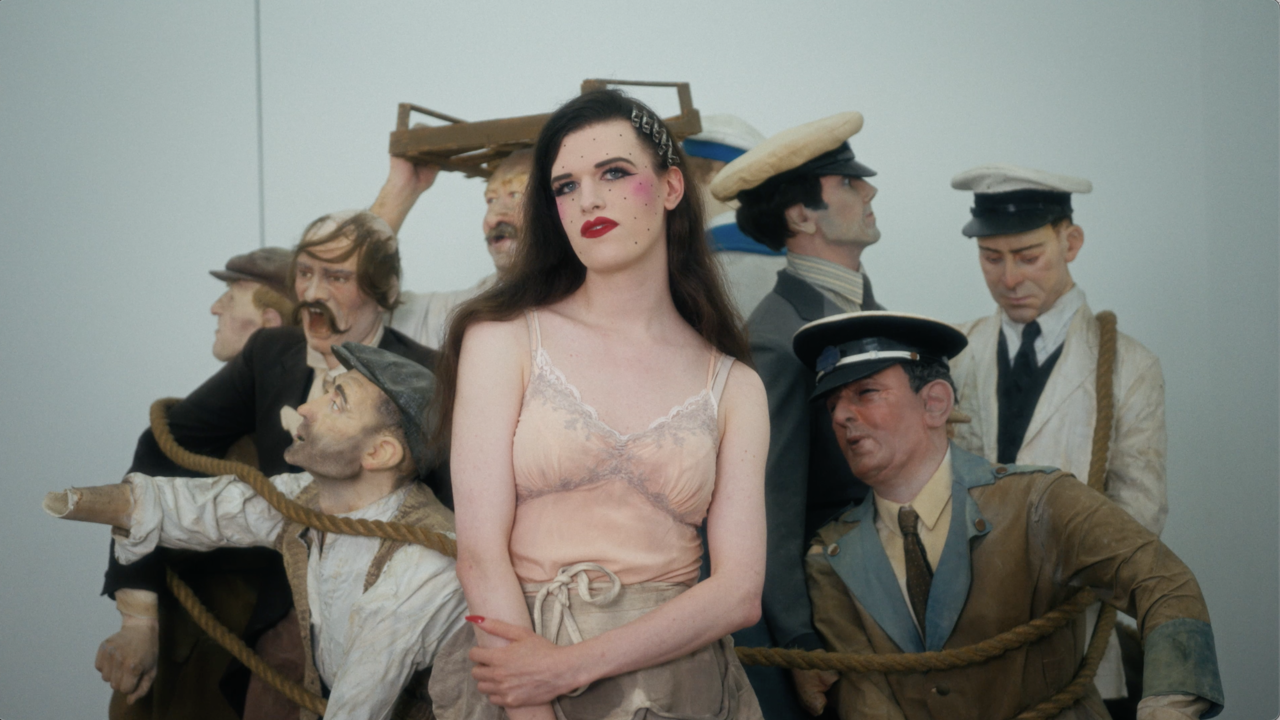In Focus: Tamara Henderson
Films and installations from the depths of the unconscious
Films and installations from the depths of the unconscious

In his 1966 essay ‘Chance Imagery’, Fluxus artist George Brecht discusses the importance of chance to the history of Modern art, beginning with Dadaist and Surrealist attempts to access the unconscious through collage and automatic writing techniques. Brecht argued that the unconscious operates on two levels in an artist’s work: in the methods used and in the origin of the images, which is unknown because ‘it lies in deeper-than-conscious levels of the mind’.
The work of Canadian artist Tamara Henderson exemplifies both aspects of Brecht’s thinking. Her short, non-narrative 16mm films make use of freely associative, seemingly nonsensical imagery, with their extended shots of ghostly still lifes, automated typewriters, blinds that rise and fall, and telephones which move like crabs across sunny beaches. Similarly, Henderson’s anthropomorphic, furniture-like sculptures and the cut-up poems in her artist publications seem like readymades appropriated from the Freudian unconscious. Her films and sculptures explicitly reference psychoanalysis: Gliding in on a Shrimp Sandwich (2014), for instance, made in collaboration with Jeannine Han, is set in a 1980s pastel-coloured, therapy-room interior, containing a light grey couch, where the patient may or may not be the blank-faced young woman who walks in and out of shot. Likewise, her sculpture Pacific Peace Chair (Vancouver) (2013) features a white couch with a pair of trousers and a T-shirt lying on top of it, suggesting the presence of a patient. But Henderson’s work also draws on what Brecht called ‘mechanical processes not under the artist’s control’.

The artist’s embrace of cinematic sound and her non-linear approach to sequencing gives her films a distinctly dream-like quality. She edits them directly in-camera while shooting, thereby restricting the amount of time she has to consider either structure or composition. Accent Grave on Ananas (2013), for example, begins with a shot of a piece of bleached purple paper that fills the screen. This is followed by a close-up of a carved-out pineapple, the inside of which is then used as a mould by a glassblower. The next scene begins in the darkness of the fruit’s interior and pans out to reveal a garden in which three concrete, T-shirt-draped sculptures ‘sit’ on a fallen tree, surrounded by glasses shaped like the inside of the pineapple. The film then cuts to an image of a spinning fan and close-ups of the tops of swaying palm trees – accompanied by the sound of upbeat steel drums and xylophones. We are similarly taken through a stream of images and sounds in Three Pockets di O Getti (2013), a collaboration between Henderson and the artist Tiziana La Melia. Here, close-ups of paintings in pastel colours hanging on a rail are followed by images of a bouquet of white gypsophila in a car and of a woman’s legs clad in shorts, from the bottom of which protrude shrimp caught in a fishing net. The soundtrack is smooth and full of synthesizers, exaggerated sound effects and meandering melodies that fade in and out with each new scene.

Henderson’s belongs to the lineage of the performance practices of the 1960s, as well as to the experimental theatre of the early avant-garde – dating back to the Futurists’ earliest performances in the 1910s. In particular, it recalls the centrality of bodily experiences in these traditions. Encountering Henderson’s work makes us acutely aware of our own bodies – internal movements, fluids, sensations – in deep and sometimes unexpected ways. This occurs during the laughter or confusion her films induce and as a result of their visceral content, such as the feathers and colours that explode out of shattered bottles in the film Bottles under the Influence (2012), made in collaboration with Julia Feyrer. Such heightened corporeal experience is accentuated by the fact that Henderson often exhibits her films and sculptures together in highly immersive installations.
Non-narrative, yet replete with strong emotional dramaturgy, emphasized through ambient sound and dramatic editing, Henderson’s films also resonate with avant-garde experimental theatre. Human performers rarely appear in them; instead, objects, landscapes and colours become protagonists animated by the hand-held camera. The anthropomorphic quality this lends renders them humorously incongruous yet sensuous and meaningful – memorable realizations of Brecht’s observations concerning the ability of the unconscious to reconcile opposites: ‘Within a periphery of nonsense, the ridiculous and the profound were made to evince each other.’
Tamara Henderson is based in Vancouver, Canada, and Stockholm, Sweden. Her solo exhibition, ‘Speaking in Scales’, is currently on view at Andrew Kreps Gallery, New York, USA. Her upcoming exhibitions include: ‘Resorting’ as part of ‘Live’ at Frieze London (presented by Rodeo, Istanbul, 15–18 October 2014); ‘Sans Tete-Au Monde’ with Santiago Mostyn, at Kunsthall Stavanger in November 2014; and ‘Consider the Belvedere’ with Julia Feyrer at the Institute of Contemporary Art Philadelphia, USA, in April 2015.






















